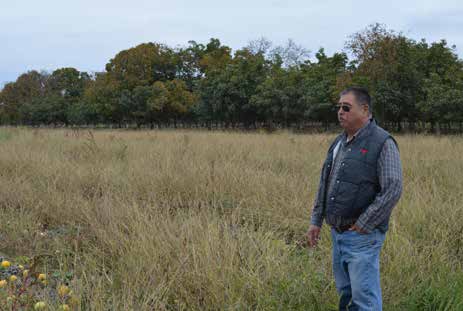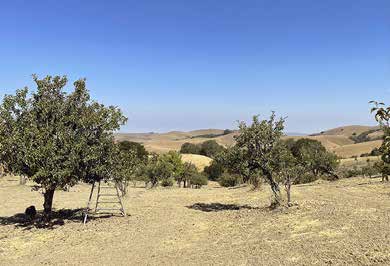
By Debra Morris–
Farming has always been dependent on varying weather patterns. With a water shortage and fear of wildfires, farming has become an even riskier occupation. These circumstances are beyond their control and small farmers are having an especially tough time because they don’t have the many resources available to them that larger farms do.
As the drought continues to worsen, many water-use limitations and regulations will be enforced upon all California residents and businesses—including mandatory water restrictions. Some restrictions have already been enacted, leaving farmers unable to pull water from streams and rivers. This crippling drought has endangered the livelihoods of almost 78,000 small farmers in California (American Farm Bureau statistics).
As reservoirs and wells run dry, groundwater is lowered to dangerous levels, and as natural water sources are restricted, farmers have abandoned fields, reduced crop size, tried to truck in water when they can, or forgo planting their crops altogether. With drastically reduced water allotments, most farmers are scrambling to make ends meet—or are leaving farming altogether.

For the last few years, farms like Bautista Ranch in Stockton have curtailed water usage through water management techniques such as drip feed and other water management techniques. Vidal Navarro of Bautista says, “We pride ourselves on being good stewards of the land and improving soil conditions to get the best produce, but in years of drought it’s very difficult to find enough water to keep our peppers and tomatoes growing. In past drought years, we’ve had to let some of the fields go fallow or just not plant at all.”
Along with sacrificing crops, many small farmers have doubled down on their resourcefulness by increasing their efficiency of agricultural water use. Drip irrigation has grown rapidly and has almost replaced gravity irrigation as a method of watering crops. This will have far reaching implications for the future of California’s agriculture.
The Pereira family at Alhambra Valley Pears and Beef have had to pay for and truck in a majority of their water this year. Their well water is running out. Darryl Pereira says, “This year has been a difficult one. In a normal year during peak season, we harvest about 600 boxes of pears. This year it’s 25% of that, and the season is shortened, too, to only 4 or 5 weeks.”
Even though the USDA Secretary Tom Vilsack, earlier this year, declared California’s 58 counties as a primary natural disaster area due to recent drought and allows for farm operations in impacted counties to be eligible for certain assistance available through the USDA Farm Service Agency, it still doesn’t solve the need for more water.
We are all dependent upon a limited natural resource whose availability is outside of our control and it is important to manage this resource wisely. It’s also important to remember that small farmers are the backbone of our local food system, and without them, you would not have fresh local fruits and vegetables on your table. Please continue to support our small farms by purchasing fresh-from-the-farm produce at your local farmers’ market.
Debra Morris is a spokesperson for the Pacific Coast Farmers’ Market Association (PCFMA). Check out the PCFMA website for recipes, information about farmers’ markets throughout the region and for much more: https://www.pcfma.org/
Published on October 7, 2021
Recent Comments